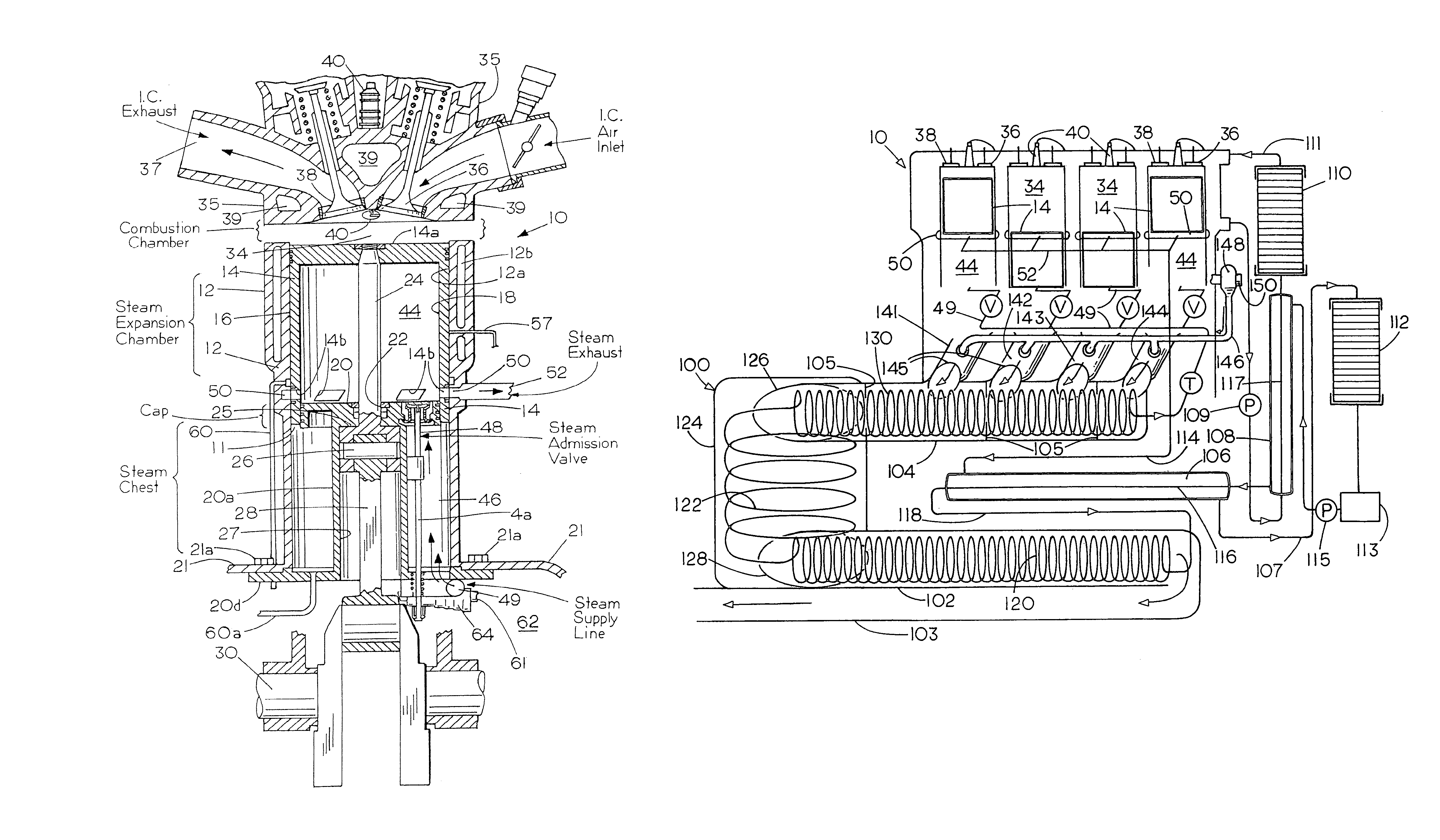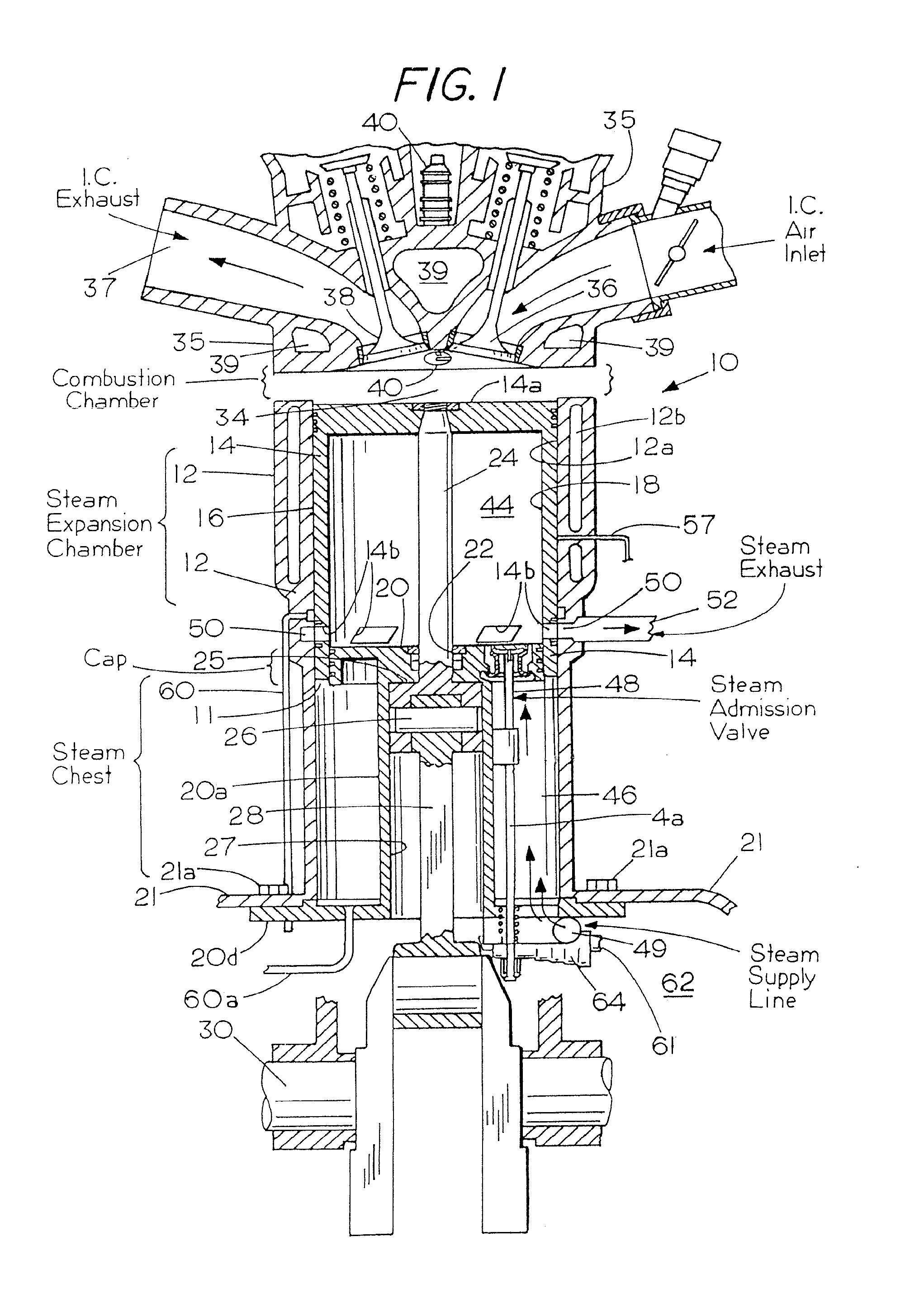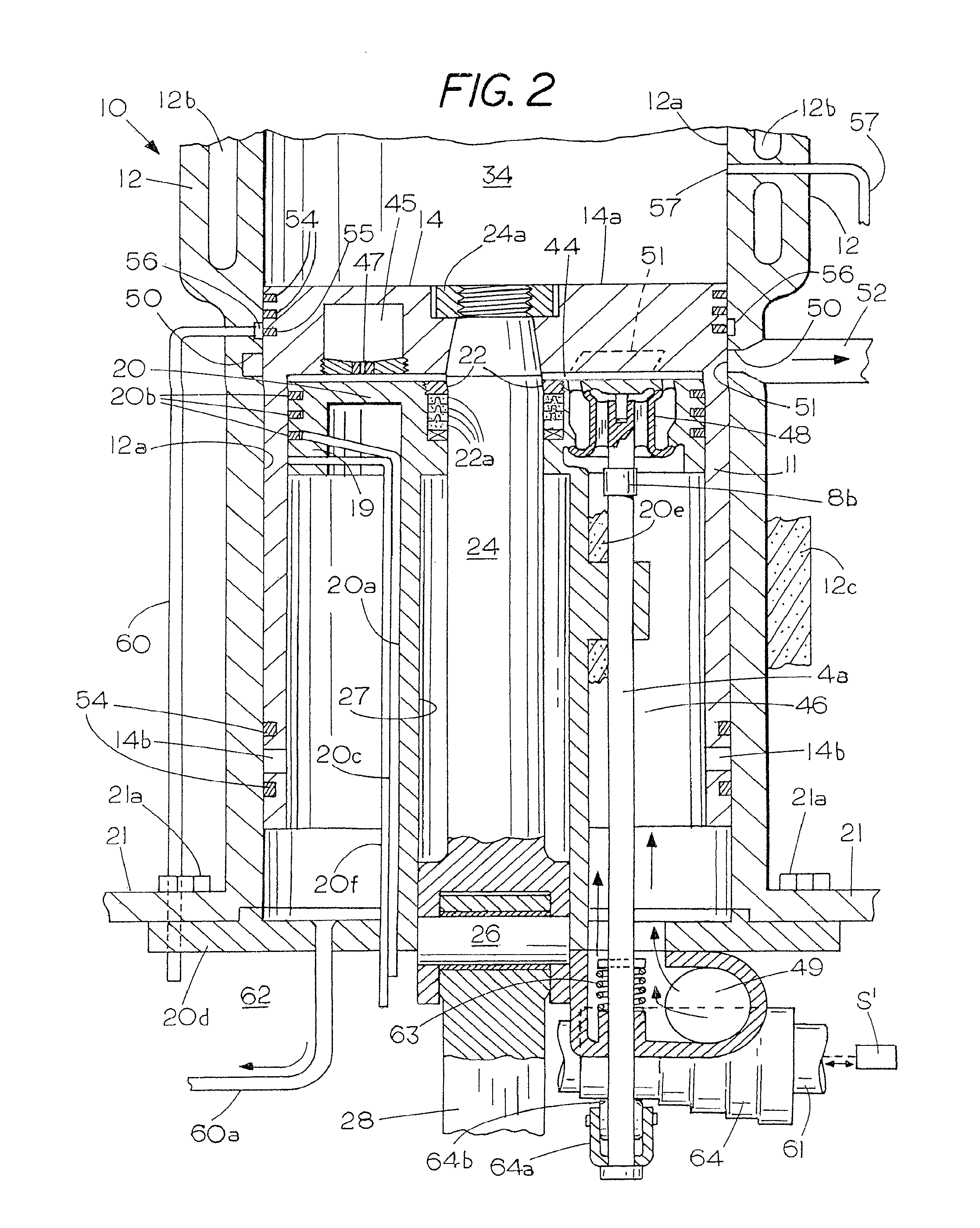Internal combustion engine with auxiliary steam power recovered from waste heat
a technology of waste heat and combustion engine, which is applied in the direction of steam engine plants, machines/engines, mechanical equipment, etc., can solve the problems of increasing fuel prices and shortages, increasing the size, weight and expense of power plants, and increasing air pollution problems. , to achieve the effect of reducing waste heat, reducing fuel consumption, and reducing fuel consumption
- Summary
- Abstract
- Description
- Claims
- Application Information
AI Technical Summary
Benefits of technology
Problems solved by technology
Method used
Image
Examples
Embodiment Construction
[0026]Refer now to the drawings. Shown diagrammatically in FIGS. 1-8 is a combination internal combustion engine and steam engine 10 that has a cylinder 12 containing a cup shaped trunk style piston 14 which, unlike ordinary pistons, is machined and ground to precise tolerances both outside at 16 as well as in the inside at 18 and is positioned to reciprocate within an annular space 11 between the inside wall 12a of the cylinder 12 and a stationary steam cylinder head.
[0027]The steam cylinder head which is located within the piston 14 comprises a flat hub, disk or circular cap 20 that may be, say, ¼ to ½ inch in thickness supported at the free upper end of an integral crosshead guide column 20a which is secured to the crankcase 21 by bolts 21a (FIGS. 1 and 2) that extend into openings 21b (FIG. 6) in base 20d shown at the lower end of column 20a in FIGS. 1, 2 and 6. The disk or cap 20 acts as a top or end cap for the guide column 20a as well as one end of a steam chamber 44 and has ...
PUM
 Login to View More
Login to View More Abstract
Description
Claims
Application Information
 Login to View More
Login to View More - R&D
- Intellectual Property
- Life Sciences
- Materials
- Tech Scout
- Unparalleled Data Quality
- Higher Quality Content
- 60% Fewer Hallucinations
Browse by: Latest US Patents, China's latest patents, Technical Efficacy Thesaurus, Application Domain, Technology Topic, Popular Technical Reports.
© 2025 PatSnap. All rights reserved.Legal|Privacy policy|Modern Slavery Act Transparency Statement|Sitemap|About US| Contact US: help@patsnap.com



